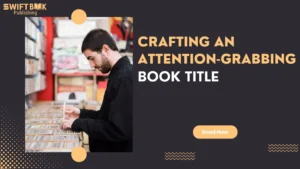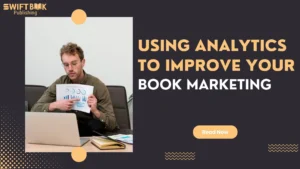If you’re serious about selling your book and growing your fanbase, here’s the truth: social media alone won’t cut it. Platforms change, algorithms shift, and one day your followers might not see your posts at all. But you know what you can control? Your email list.
Email marketing for authors is one of the most effective tools for building direct relationships with readers. Whether you’re planning a virtual book launch, setting up a book pre-orders strategy, or announcing a translation in your next region, having a list of engaged subscribers means your message lands right in their inbox, no middlemen.
Let’s break it all down. From starting your first list to sending automated campaigns that actually work, here’s everything you need to know.
Why Email Marketing Still Works
We get it, email might feel a bit old school. But here’s the thing: it converts better than social media. Way better. Open rates are solid, clicks lead to real sales, and you’re not relying on some algorithm to maybe show your content.
That’s why major book marketing services push email hard because it works.
Step One: Start With an Email List
Don’t wait until your book’s already published. Start building your list early, think before you write a query letter or release your first teaser.
You can collect emails through:
- A signup form on your author website
- A freebie, like a short story or first chapter
- A reader magnet via BookFunnel or StoryOrigin
And always, always make sure you’re GDPR-compliant, especially if you’re going global through book translation publishing.
Step Two: Segment That List
Not all readers are the same. Some love newsletters. Others only want launch updates. If you’re writing in different genres or marketing to different regions, list segmentation is your best friend.
Examples of segments:
- Readers who’ve bought Book 1
- Newsletter-only subscribers
- Reviewers or ARC readers
- International vs domestic fans
With good segmentation, you can promote your book media kit to bloggers while offering sneak peeks of your book promotional video to superfans, all without overwhelming your entire list.
Step Three: Write Better Emails
This one’s simple. If your emails are boring, people won’t read them. So keep them useful, relevant, and short.
Here’s what you might include:
- Updates on your writing or publishing process
- Sneak peeks from your latest WIP
- Behind-the-scenes on how you prepare a manuscript for an audiobook
- Launch news and promotions
- Reader shoutouts and reviews
Add personality, use your author voice, and don’t be afraid to have fun with it.
Step Four: Automate the Smart Way
You don’t have time to write every email manually. The good news is, email platforms like MailerLite, ConvertKit, and Mailchimp let you automate:
- Welcome sequences for new subscribers
- Follow-up after purchases or downloads
- Launch countdowns
- Post-release promotions
Plan ahead to align with your KDP Select vs wide distribution timeline or international rollout. Automation helps keep you organised and readers engaged, without burning yourself out.
Bonus Tips That Actually Help
1. Keep it consistent
Whether you email weekly, fortnightly, or monthly, stick to it. Let readers know what to expect. They signed up to hear from you, so show up.
2. Have a goal for every email.
Are you selling? Sharing? Asking for reviews? Pushing for using reader reviews for marketing? Don’t just email because you feel you should. Send with purpose.
3. Track your stats
Open rates, click-throughs, and unsubscribes all tell you what’s working and what’s not.
Email Marketing as Part of a Bigger Plan
Email isn’t the whole pie. It’s a slice. Combine it with:
- A professional book promotional video
- Smart social media (including Goodreads for authors)
- An eye-catching website with great book typography tips
- Your full book media kit for launches
- Evergreen blog content built from ghostwriting ethics or writing advice
- Strategic pricing plans, especially for pricing self-published book titles
Together, they form a complete strategy.
What About Design?
Don’t worry, you don’t need to be a graphic designer. But your emails should be readable and visually appealing. Use:
- Short paragraphs
- Clear CTA buttons
- A mobile-friendly layout
Most platforms offer simple drag-and-drop editors to help you build clean, good-looking campaigns.
And if you’re working with book cover design services, see if they can help you keep brand colours and fonts consistent between your site, books, and emails. Readers will notice the professionalism.
Final Note
Email marketing isn’t just a promotional tool. It’s how you stay connected with readers between launches, across genres, and through every stage of your author journey.
So, whether you’re about to write a query letter, pricing your indie release, or already juggling edits and newsletters, start now. Because that email list? It’s your safety net, your launchpad, and your direct line to the people who actually care about your work.
The best time to start? Yesterday.
The second-best time? Today.







